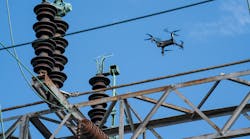NOJA Power’s OSM15, OSM27 and OSM38 ACRs incorporate temporary time addition (TTA) functionality as standard. This feature enables utilities to increase the number of ACRs on a feeder and replace load-break switches with full fault protection devices. In addition, NOJA Power’s ACRs’ use of solid dielectric insulation and vacuum arc quenching help utilities meet their environmental responsibilities by eliminating the polluting oil and Sulphur Hexafluoride (SF6) gas used in load-break switches.
In conventional installations, the number of ACRs on a single feeder is limited due to the different Time Current Characteristic (TCC or ‘grading’) setting for each upstream unit, which ensure that only the closest upstream ACR to a non-recoverable fault locks-out. The grading is set such that each ACR reacts more quickly than any upstream unit but slower than any downstream unit.
However, substation circuit breakers policy normally dictates that the devices trip after a maximum of one second if there is a fault current on a given feeder, to protect expensive equipment. Because the minimum time difference between operations of subsequent ACRs is around 200-to-400 milliseconds, this one-second restriction limits the number of ACRs on a single feeder to a maximum of two-to-four devices. Such a limit can be a problem on long feeders with limited number of ACR’s because a single fault may cause a loss of supply for a significant number of customers.
Traditionally, utilities increase the number of sections on a feeder by adding load-break switches to work in conjunction with the ACRs. However, load-break switches have a number of drawbacks, including no fault break or protection capability and the use of non-environmentally friendly oil and SF6 gas.
Because a load-break switch can’t open under a fault current, its operation must be coordinated with the upstream ACR so that it opens during the dead time of the ACR’s final reclose operation. To ensure safe coordination engineers extend the dead time of the ACR’s final operation to allow time for the load-break switch to operate. This slows down the fault protection process potentially increasing the disruption to consumers. In addition, the use of load-break switches raises equipment damage and safety risks because there is no interlocking mechanism between the ACR and load-break switch to guarantee coordinated operation.
TTA enables NOJA Power’s ACRs to overcome the limit on the number of units on a single feeder by dispensing with traditional grading and using ACRs with identical TCCs. In the event of a fault current, all the ACRs on a feeder simultaneously open virtually instantaneously and certainly well within the one-second delay of the substation circuit breaker. Fault location and lock out (if the fault is not rapidly cleared) is then achieved by coordinated reclosing between all the ACRs starting with the device furthest upstream and then each device downstream in turn (see “About Temporary Time Addition” below).
The TTA feature of NOJA Power’s ACRs allow utilities to dispense with load-break switches and replace them with environmentally friendly full fault protection devices while retaining or improving the granularity of the sectionalization of a feeder. Moreover, because ensuring coordination of ACR operation by grading can be a complicated and time-consuming process, the engineering overhead for a feeder using ACRs with TTA is also reduced.



